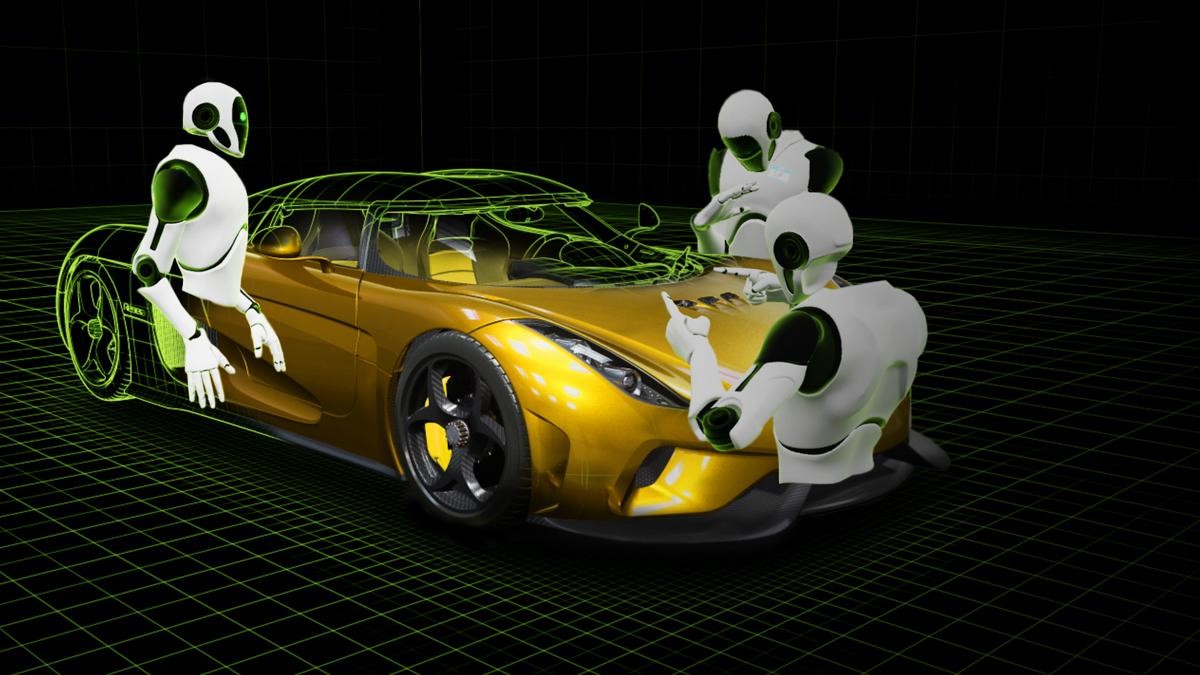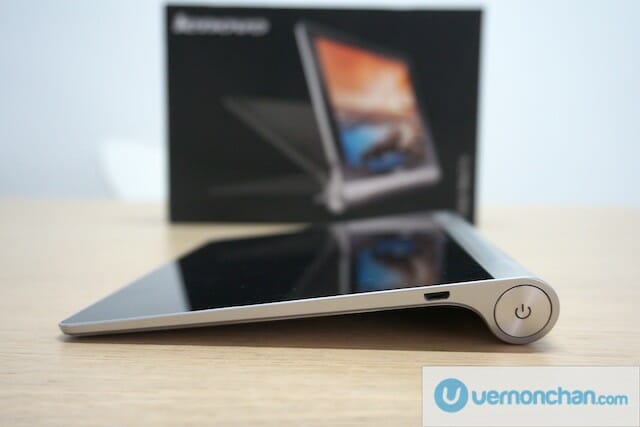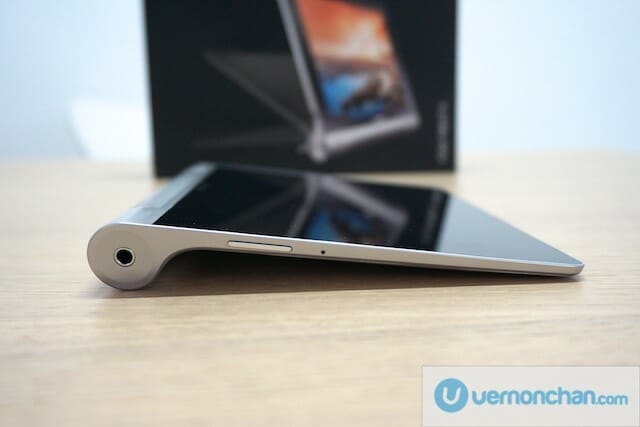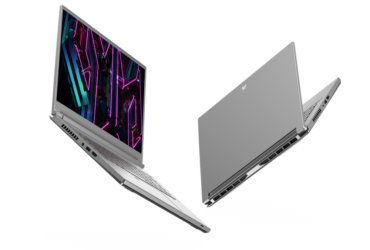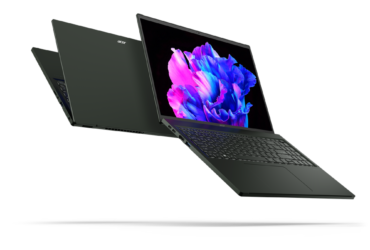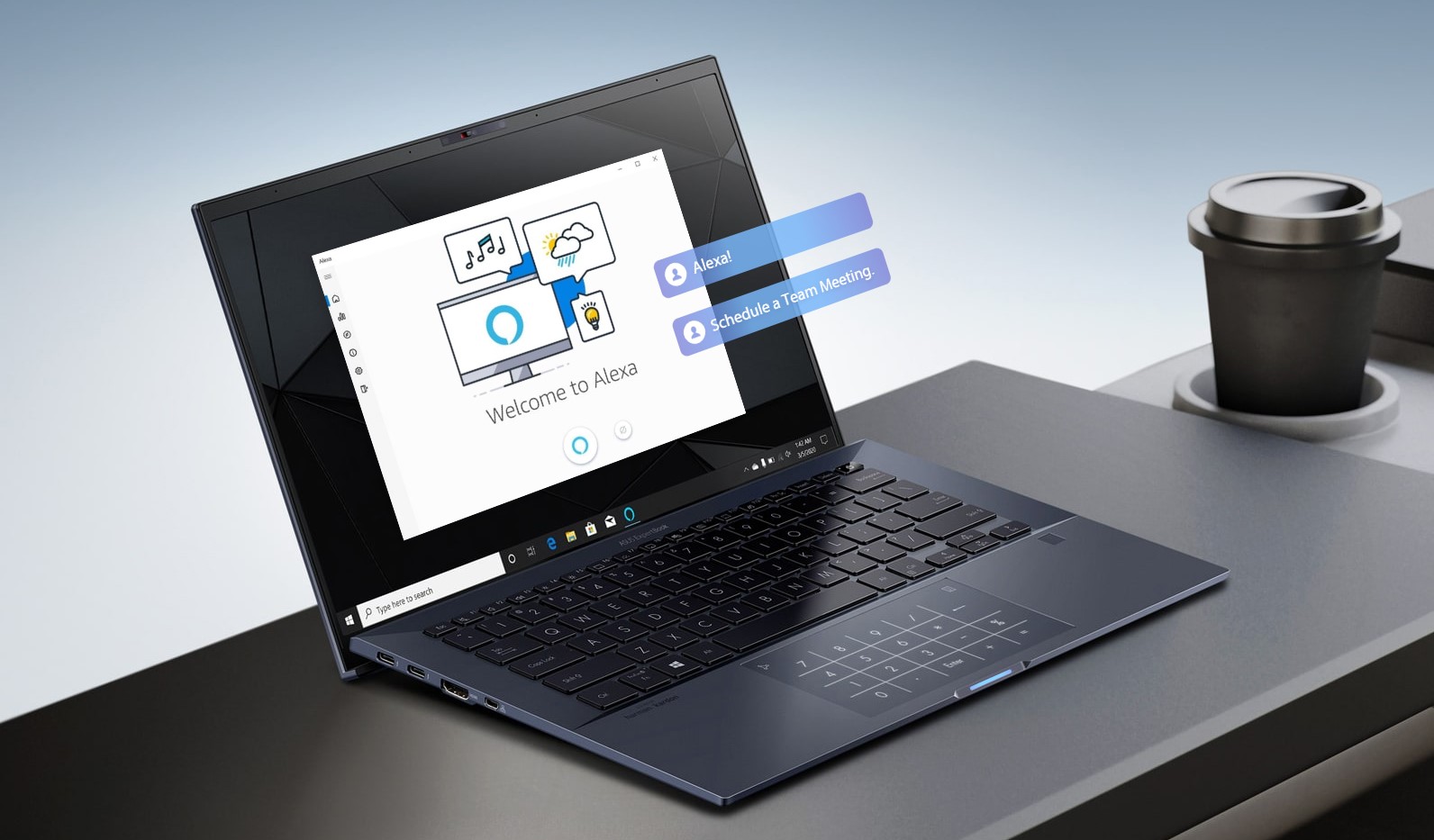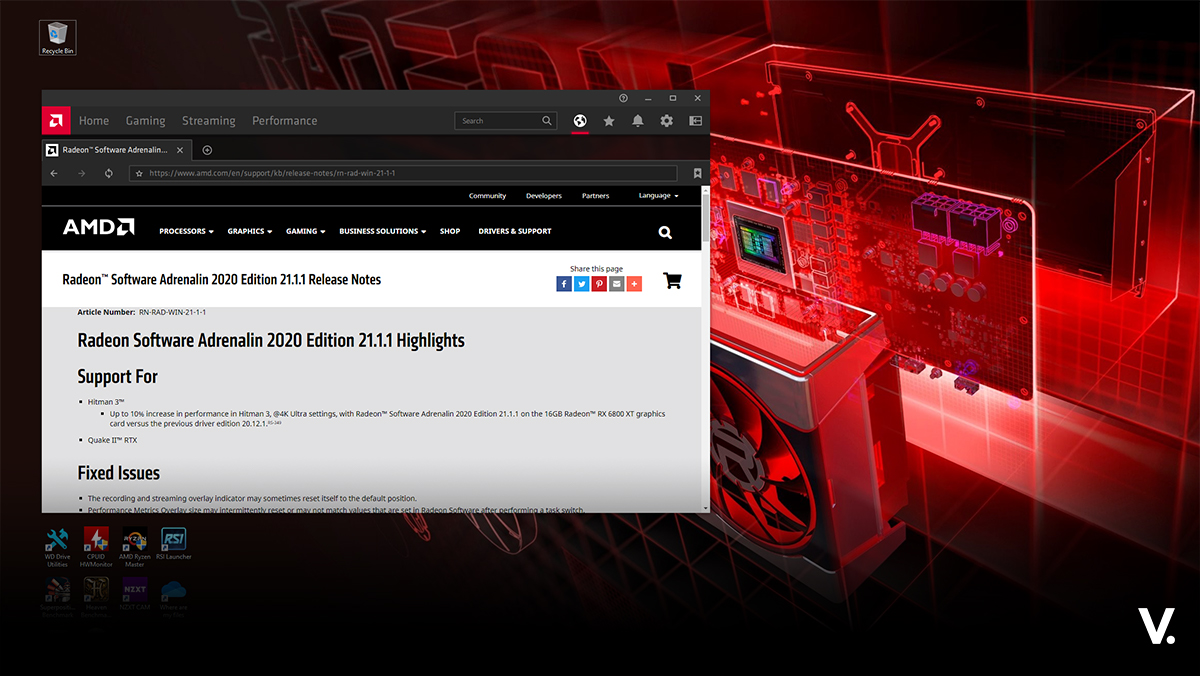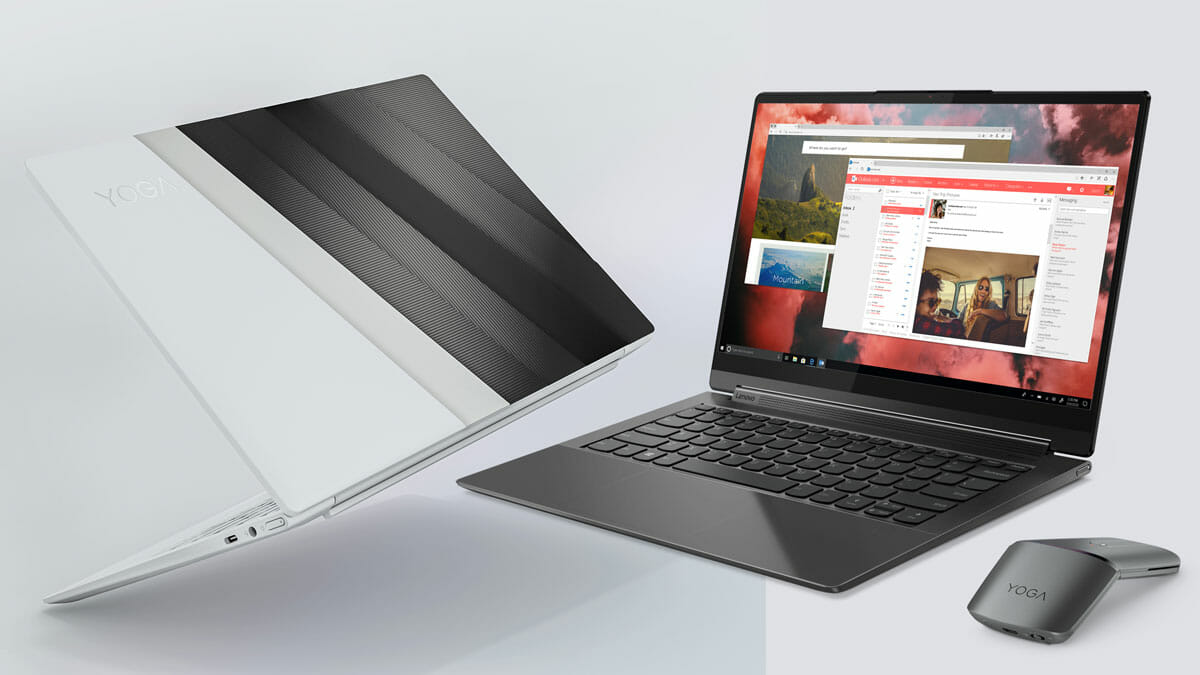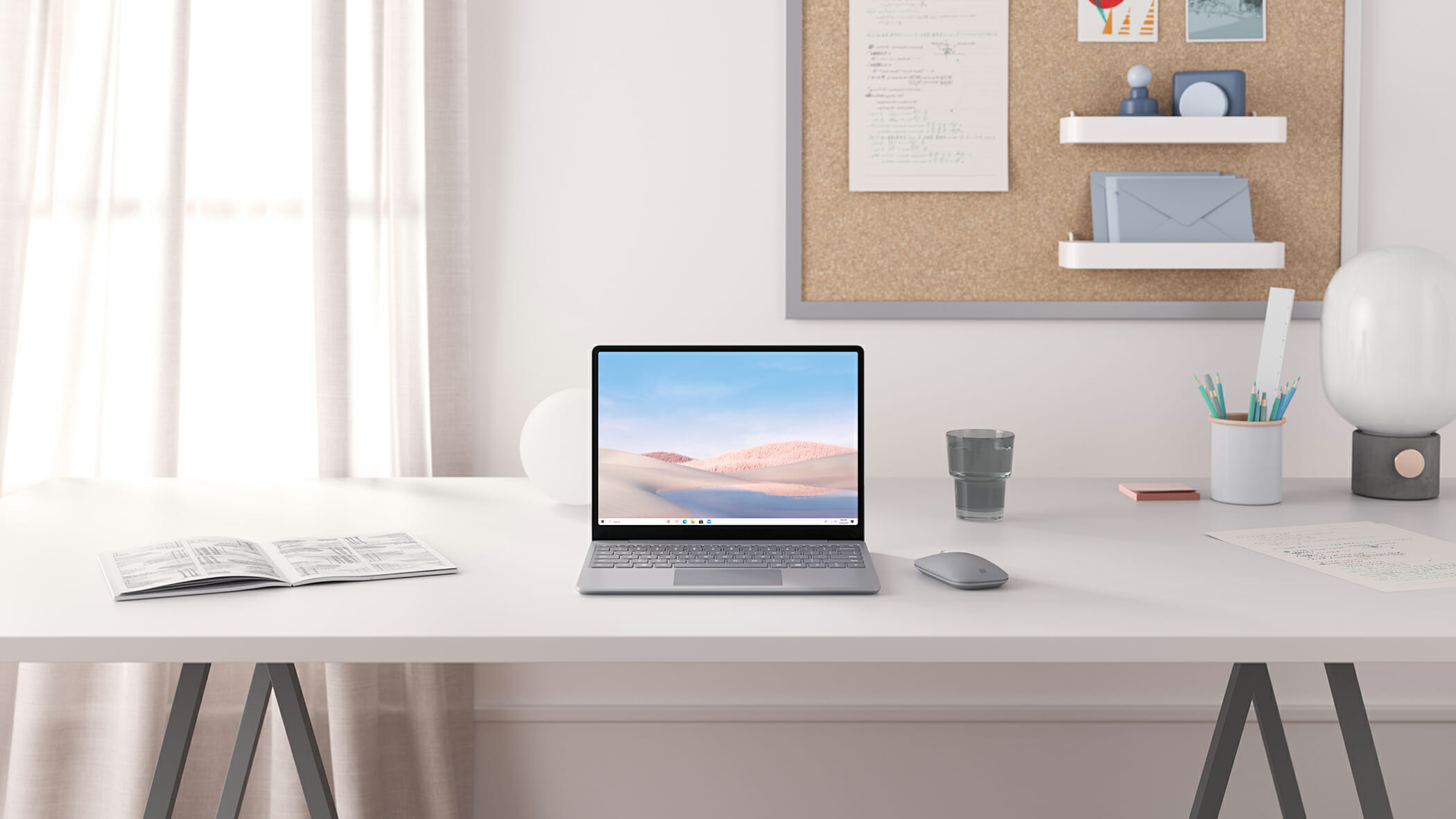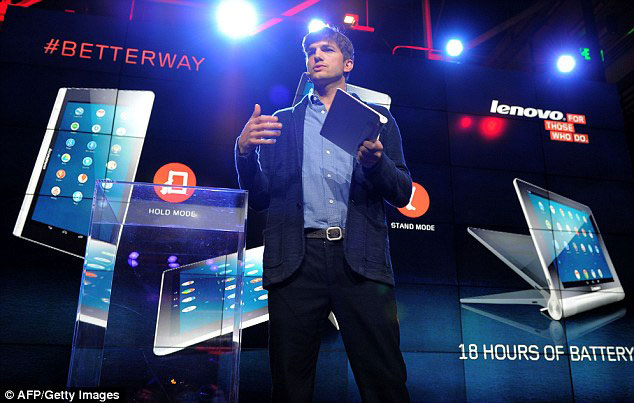
In an interesting twist, Hollywood actor Ashton Kutcher was announced a product engineer of Lenovo late October last year. Whether an elaborate marketing gimmick or otherwise, Kutcher appears as convincing as his portrayal of the late Steve Jobs in the Apple founder’s recent biopic. Kutcher was tasked to work with Lenovo’s engineering teams to develop and market the Yoga line of tablets. The first product of the partnership is the Lenovo Yoga Tablet 8. Courtesy of Lenovo Malaysia, I was recently seeded a unit of the Yoga Tablet 8. Check out the unboxing pics if you haven’t already, and here are my first impressions of the device.
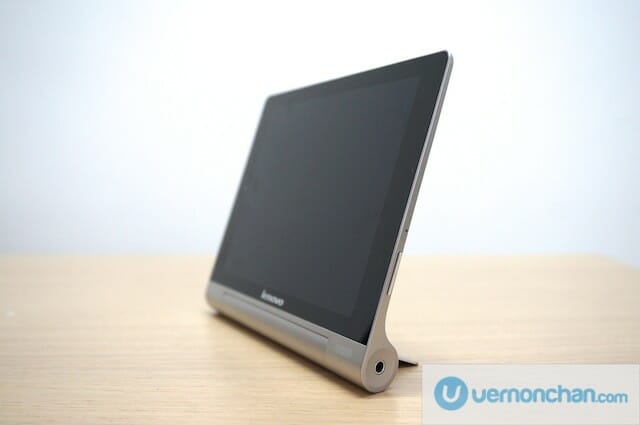
Quick overview
The Lenovo Yoga Tablet 8 (B6000-H) can be described as quirkily different, with its slender and ergonomic design incorporating a cylindrical battery which doubles as a base and a hand grip. At first glance its design cues remind me of the first Sony Tablet S, and Apple’s sexy wireless keyboard and trackpad.
A built-in kickstand in the rear lets the tablet stand on its own, with adjustable angles to boot. The cylindrical base is rather unique and strangely practical as it touts its three mode usage – Hold, Stand and Tilt. The tablet intelligently recognises which mode it is in and switches the UI automatically to suit.
Overall solidly put together, and in my honest opinion, a good-looking device. Ultra-thin at 7.3mm and weighing just 401g, the tablet feels great in the hand.
In terms of hardware, the Yoga Tablet 8 packs a 1.2Ghz quad-core MediaTek MTK6589 MT8125/8389 processor, PowerVR SGX544MP GPU, 1GB RAM, 16GB/32GB storage, 8-inch IPS LCD (1280 x 800 pixels @ 189PPI), microSD expansion, 5MP main camera with autofocus, 1.6MP front-facing 720p camera, 42Mbps HSPA+, Wi-Fi b/g/n, Wi-Fi hotspot, Bluetooth 4.0 and A-GPS.
With its huge 6,000mAh Li-Ion built-in battery, the Yoga Tablet 8 lasts up to a whopping 18 hours. It runs Android 4.2.2 Jelly Bean with a custom Lenovo UI layer.
First impressions
When I first touched the device during the launch I was already quite impressed with it. I thought it to be unique and well-built. That impression hasn’t changed since I had a proper hands-on experience with it.
I find the cylindrical base very practical – it keeps the tablet stable in Stand mode, and acts as grip in Hold mode. As I do read and play games quite a bit, the grip is a highly welcomed feature.
The other thing I like is that it has cellular capabilities, so I’ve been using my #Hotlink SIM with it, giving me broadband access when Wi-Fi isn’t available.
In terms of performance, the tablet works generally well. To be honest, the MediaTek isn’t the quickest nor the best performing SoC in the market. In fact, it’s a regular feature in lower end, budget devices. Having said that, the tablet is quick enough for everyday tasks, and has no problems coping with GPU-intensive games like NFS Most Wanted, or FIFA 14.
Users may find the Lenovo UI a little annoying for its missing App Drawer, and sometimes laggy response. Definitely room for improvement there.
Two seriously impressive aspects of the device though, is the amazing battery life and its audio quality, thanks to the front dual speakers with Dolby Digital Plus.
I’d say good job to Lenovo (and Ashton Kutcher) on the Yoga Tablet 8, but hold your horses for a full review.
The Lenovo Yoga Tablet 8 retails for RM999 (SRP).



